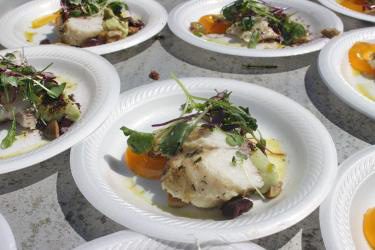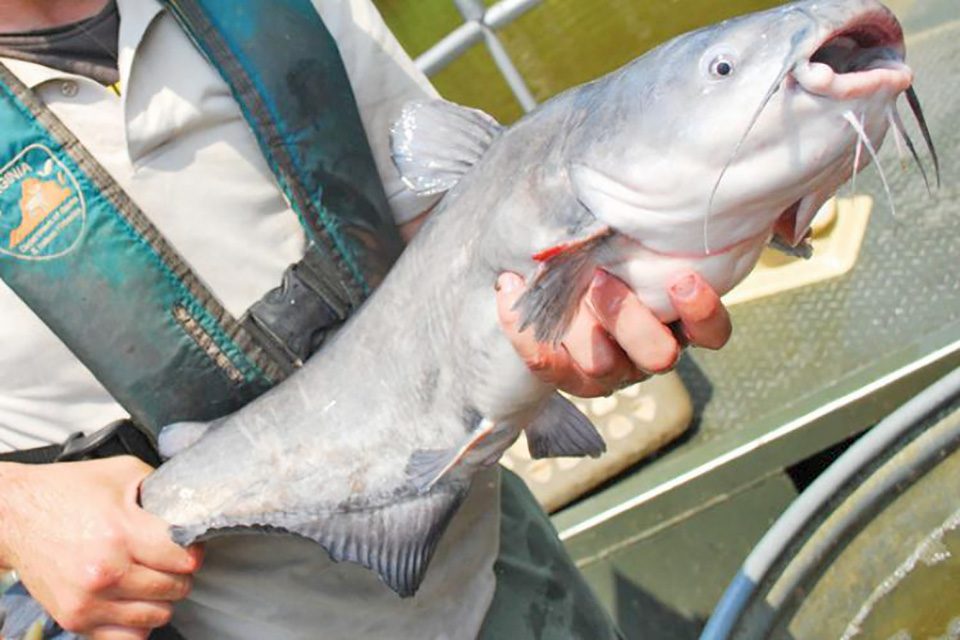A new management strategy in the Chesapeake Bay aims to put blue catfish on your plate.
October 20, 2020
Situations that are truly win-win are few and far between. But, resource managers and foodies alike agree: Eating blue catfish from the Chesapeake Bay is tasty and nutritious一and it is good for the ecosystem.
Blue catfish are considered an invasive species in the Chesapeake Bay. They were introduced to several rivers on Virginia’s Western Shore decades ago. People thought that these fish, which like fresh water, would stay in those rivers. But blue catfish were able to tolerate higher salinity than anticipated. They swam out into the Bay and back into other rivers. And people moved them from one river to another, too. They are now in most of the Bay’s river systems, in Maryland and Virginia’s Eastern and Western Shores.
Some people are happy to see blue catfish. They are fun targets for angling because they grow big and can provide a challenge for recreational fishermen. But blue catfish eat basically everything, including blue crabs and other fish. Not only do they compete with other larger fish for food … they eat those other fish, too. As a result, these apex predators are throwing the food web off balance.
Fishery biologists have learned more about blue catfish in recent years. And resource managers have been working to identify ways to keep the population from getting out of hand. The Chesapeake Bay Program, in which NOAA is a key partner, has an Invasive Catfish Workgroup that has focused on the problem. Recently, this Workgroup approved an Invasive Catfish Management Strategy (PDF, 21 pages) to guide efforts around the Bay to manage invasive catfish. In addition to blue catfish, flathead catfish are also invasive in the Bay. But their numbers are not as great as blue catfish and they are more limited to freshwater.
Enjoying Blue Catfish
Managers hope to increase public awareness of blue catfish. They want people to understand the effects of blue catfish on the Bay and to know that they are delicious and nutritious. A 4-ounce serving of blue catfish includes 19 grams of protein, with only 90 calories and 1.5 grams of fat. And they include healthy Omega-3 fatty acids, too. Blue catfish is already available in many grocery and seafood stores.
Adult blue catfish are not bottom feeders, so they don’t get the “muddy” taste some catfish do. Their taste has been likened to striped bass, another Bay favorite. To help people learn how to use these invasive fish in their kitchen, collections of recipes using blue catfish are even available!

Seasoned and grilled is one way to enjoy this tasty seafood.
Blue catfish that live a long time in the Bay can accumulate toxins in their bodies. These older fish also grow quite large. Research has helped regulators understand size limits for blue catfish that are healthy to eat. For example, Maryland recommends that recreational anglers fishing for dinner should keep their catches to smaller than 30 inches. So the new management strategy includes guidelines to keep fish available from the commercial fishery to below a certain size. And recreational anglers fishing for dinner should keep their catches to less than 24 inches. The good news is that this keeps the big fish in the water as a challenge for the anglers who target the larger trophy fish.
Chesapeake Bay blue catfish products that are available in grocery and seafood stores are routinely inspected by the U.S. Department of Agriculture. That means the blue catfish you serve your family is tasty, nutritious, and safe. Enjoy!
